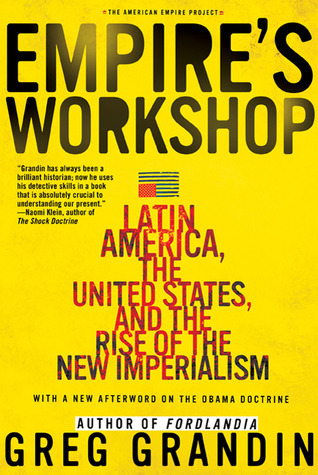What do you think?
Rate this book


320 pages, Paperback
First published January 1, 2006
* The U.S. government/corporations’ use of mercenaries dating back to the 1790s;
* The military and economic support the U.S. government provided to U.S.-based corporations privatizing massive public sector industries, dating back to at least the 1850s;
* The Shock Doctrine tactics used by the U.S. military to provoke wars with Latin American countries to allow access for U.S. corporations and banks to establish economic footholds (á la “The History of Japan”);
* The widespread U.S.-backed coups of democratic and socialist leaders with broad popular support to maintain a favorable economic environment for U.S. corporations;
* The manner in which Christian proselytizing and prosperity gospel were used to justify economic imperialism abroad;
* The use of white supremacy and racism to justify mass violence against foreign civilians and refuse to provide aid or asylum (e.g., page 31: “If expansion enjoyed broad support, the idea of direct colonialism did not. ‘Filipinos cannot be citizens without endangering our civilization,’ William Jennings Bryan said, based on his understanding that cheap Filipino labor would drive down the wages of the United States’ white working class.” Reminds me of the same theme/tactic in A People’s History of the United States)
I spent 33 years and four months in active military service […] and during that period I spend most of my time as a high-class muscle-man for Big Business, for Wall Street and the bankers. In short, I was a racketeer, a gangster for capitalism. […] I helped make Mexico and especially Tampico safe for American oil interests in 1914. I helped make Haiti and Cuba a decent place for the National City Bank boys to collect revenues in. I helped in the raping of half a dozen Central American republics for the benefit of Wall Street. I helped purify Nicaragua for the International Banking House of Brown Brothers in 1902-1912 […] I brought light to the Dominican Republic for the American sugar interests in 1916. I helped make Honduras right for the American fruit companies in 1903. In China in 1927 I helped see to it that Standard Oil went on its way unmolested. […] Looking back on it, I might have given Al Capone a few hints. The best he could do was to operate his racket in three districts. I operated on three continents.